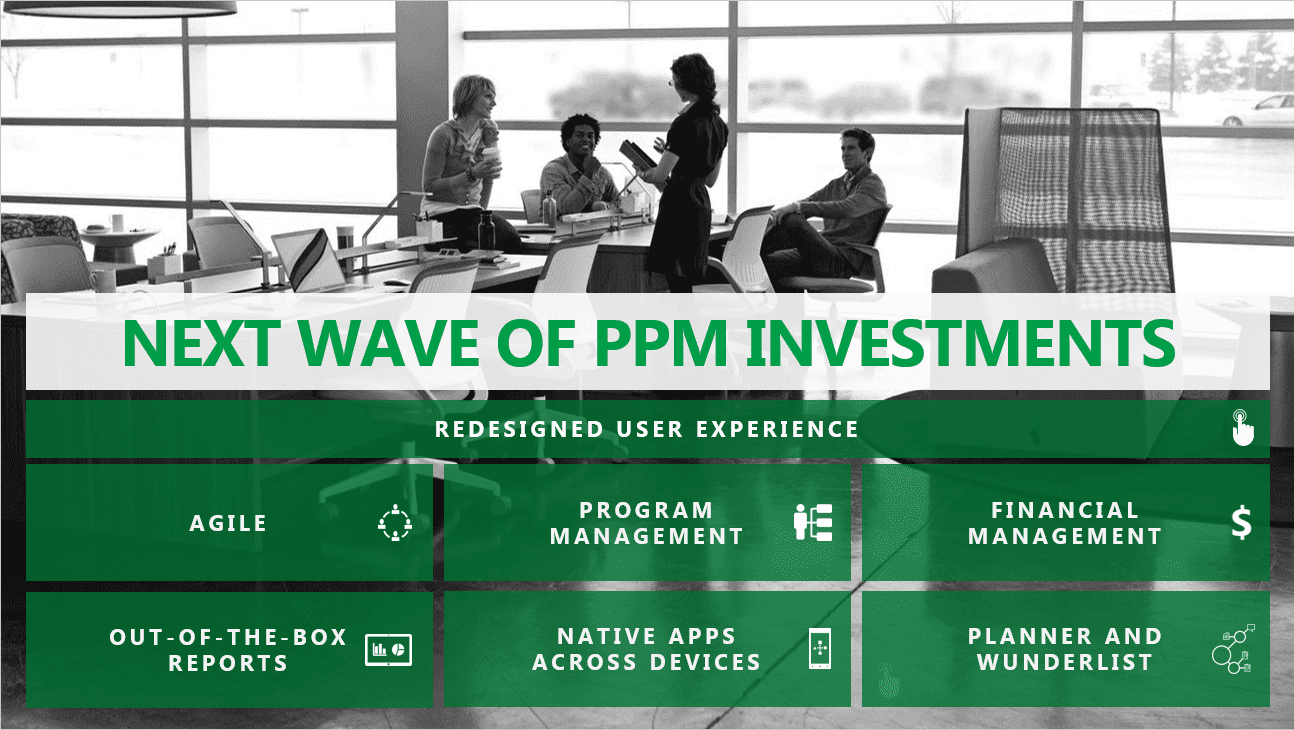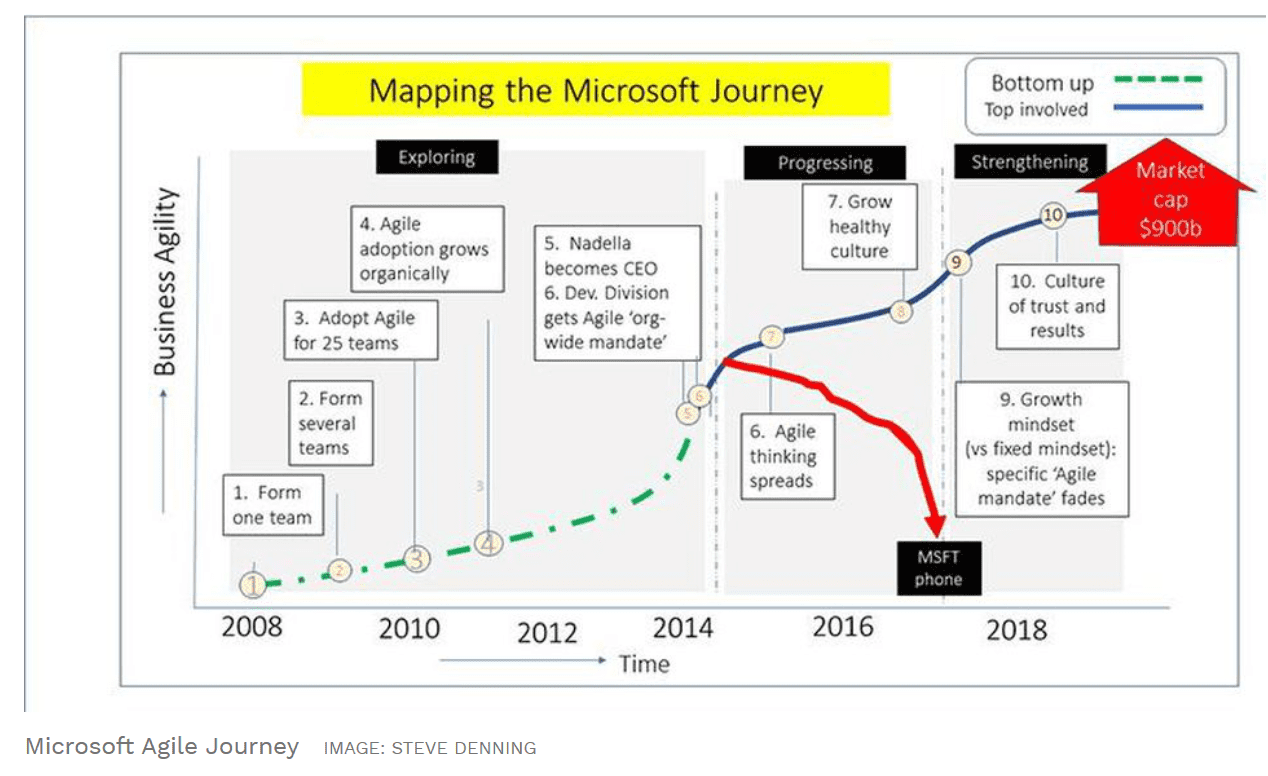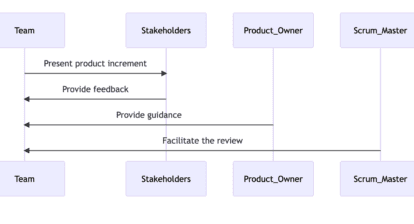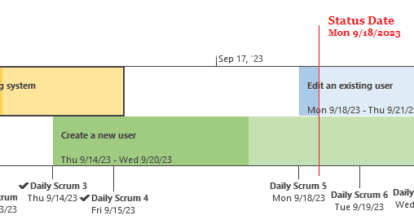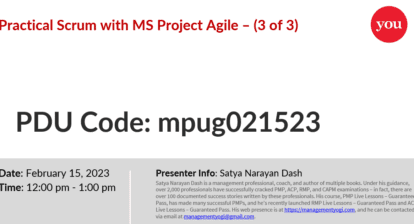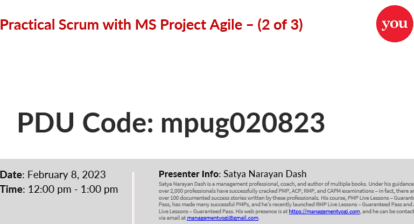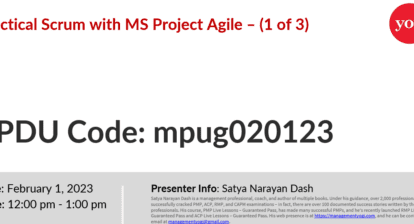Agile PPM & Project
Several years ago, Microsoft outlined their commitment to providing better experiences and richer capabilities to users of MS Project. One of the key investment areas was Agile. We have seen this evidenced with new tools coming forward. Examples include Office 365 Planner, Wunderlist which is now MS To-Do, and the Kanban and Sprint Boards now a part of MS Project. Even Team Foundation Server (TFS) has grown into the new Azure DevOps (Visual Studio) for developers, proving better alignment for Epics, User Stories, Sprints, Requirements, and connecting source code directly to Agile constructs.
Over the next year, we will continue to see significant releases from MS Project all designed to provide a new and improved user experience, as well as Agile capabilities for advanced to non-sophisticated Project users. This is the continuing and evolving story of Agile and Microsoft’s technologies.
Understanding Agile
There are many who have the misconception that Agile is just for software development. It has been and is being used for manufacturing, engineering, construction, testing, and many other project processes that require iterations or iterative working sessions leading to a final result.
What is perhaps most exciting about Agile is the methodology it brings to scheduling. That is, its allowance for complex or highly interactive reviews and working iterations with stakeholders and project teams that produce a better product or result. This benefit may not have been originally thought of or intended, but was and is a value very much needed by customers.
12 Key Agile Principles
In Agile development, there are 12 key principles that guide project teams, interactions, and methodologies for delivery. They are as follows:
- Customer satisfaction by early and continuous delivery of valuable software
- Welcome of changing requirements, even in late development stages
- Working software delivered frequently (weeks rather than months)
- Close, daily cooperation between businesspeople and developers
- Projects built around motivated individuals, who should be trusted
- Face-to-face conversation as the best form of communication (co-location)
- Working software as the principal measure of progress
- Sustainable development, which is able to maintain a constant pace
- Continuous attention to technical excellence and good design
- Simplicity—the art of maximizing the amount of work not done—is essential
- The best architectures, requirements, and designs emerge from self-organizing teams
- Regular team reflection on how to become more effective with adjustments made accordingly
Microsoft’s Journey
Having helped build Project Management cultures in organizations for the last 25 years, I have seen that those organizations who fully embrace their tools and integrate them with project management best practices, including Agile, have had the most success. In fact, those organizations have been the fastest at creating a user experience that is easier to adopt and utilize. They have also been able to provide better return on investment for teams and professionals.
Microsoft, as a company, is no exception to this. As a Microsoft Project MVP since 2006, it has been an amazing journey for me to watch the Microsoft engineering team move from a Waterfall software development program to an Agile one by fully utilizing Project/Project Server. They continue to utilized Agile methodology to create the latest PPM tools (Azure DevOps, Office 365 Planner, Teams, and other PPM technology tools).
In a recent article by Forbes, Microsoft is reported to have internally helped reduce their bulk and bureaucracy by leveraging Agile practices. This journey didn’t happen overnight, but it did transfigure Microsoft into a trillion-dollar industry when many other similar type organizations struggle with their own process improvements.
According to another article published in Forbes Magazine, even Amazon has embraced Agile to improve its capabilities and to evolve into a more efficient and responsive company.
As we know, Agile, like any methodology, helps to create processes, procedures, and ultimately results. Infused with a time-phased, metrics-driven engine that delivers visibility to assignments, deliverables, work and cost estimates, and the ability to do enterprise wide resource capacity and forecasting/strategic planning, there is no question that Agile is a game changer to large and small organizations alike.
In the last five years, Microsoft has invested significantly in not just trying to add features, but to create a well balanced and integrated technology tool solution that is addressing the need for speed and value realization of the modern workforce.
Anyone from an individual project manager to the enterprise project management office can use Project PPM and the Microsoft blend of Agile tools.
Announcing my upcoming webinar series
I am excited to be presenting a webinar series this month with the intent of continuing to educate and empower our Project Management community in how to maximize Agile and Microsoft PPM technologies to create better productivity and results. I hope you can attend or at least view the recordings of these sessions as we will cover not only the structure and importance of the Agile methodologies, but also the use of Microsoft Project and Project PPM tools.
This series is designed to help you line out how, not only to use or leverage Agile, but also how to utilize the widening landscape of Microsoft Project technologies designed to give the end-user a much easier and better implementation of Agile. The details and links to register for the webinar series are listed below:
Session #1 Recording: Understanding & Incorporating Agile Project Management
- Description:
- Agile has many approaches and methodologies. Learn about how to leverage Agile for any type of Project Management.
- Learning Objectives:
- Understand the different disciplines within Agile and know which are best for what type of projects
- Learn the Strategy Microsoft is taking with Project to support Agile Project Management
Session #2 Recording: Agile Features & Capabilities in MS Project/Project PPM
- Description:
- Microsoft keeps unfolding new features, tools and capabilities supporting Project, Program and Portfolio Management. Come learn the latest Agile features as well as what is in store by Microsoft to continue to support the growing needs of an Agile PM community.
- Learning Objectives:
- Learn the New Agile features in MS Project
- Learn the New Agile tools in Office 365 designed to support MS Project & Agile Project Management
Session #3 Recording: Best Practices & Real-World Use of Agile with MS Project/Project PPM
- Description:
- Learn applied Agile Project Management best practices with MS Project, Project PPM and Office 365 in a real-world scenario
- Learning Objectives:
- Understand how to merge and leverage Agile methodologies with MS Project & Project PPM capabilities
- Review real-world scenarios and approaches to deliver Agile Project Management with Microsoft PPM technology
Remember that Microsoft is working on their new modern version of MS Project, one that is engineered from the ground up to be easier for users to learn, use, and implement.
I look forward to seeing you on my webinars or hearing about your successes with Agile and the Microsoft technology experience in the comments below.


